- Home »
- Learningcenter »
- New roof before solar
FAQ: Do I Need a New Roof Before Getting Solar Installed?
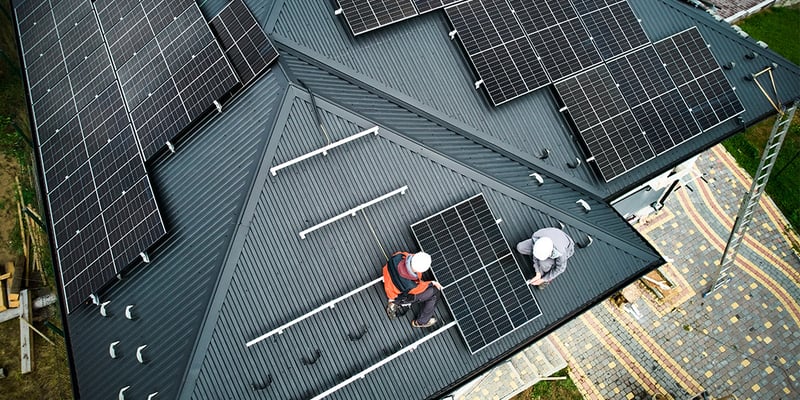
Curious about whether you need a new roof before installing solar panels? Understandably, solar panels are a major investment, having the potential to greatly affect your financial state and environmental footprint. Your roof's condition holds a significant role in the decision-making process.
Instead of jumping in headfirst, let's cover all of the various factors that affect your purchase: the current state of your roof, its age, the materials used, and the anticipated lifespan of the solar panels are all important considerations. Overlooking any of these elements could lead to a host of complications.
Let's get started!
Your Roof's Lifespan
The roof's life expectancy can really impact your decision to install some solar panels; a roof is not immortal - it requires your attention.
Typically, if your roof has plenty of years left in it, adding solar panels won't be an issue. The explanation for this is straightforward. Most solar panel systems have a lifespan ranging from 25 to 30 years. If your roof can keep up this pace or even outlast it - that's a good sign.
But what if your roof isn't long for this world? Things start to get tricky. Counting on an aging roof to bear a brand-new solar system could be a substantial error. Here: if the roof isn't going to outlast the solar setup, you'll need to change the roof while your solar panels are still working.
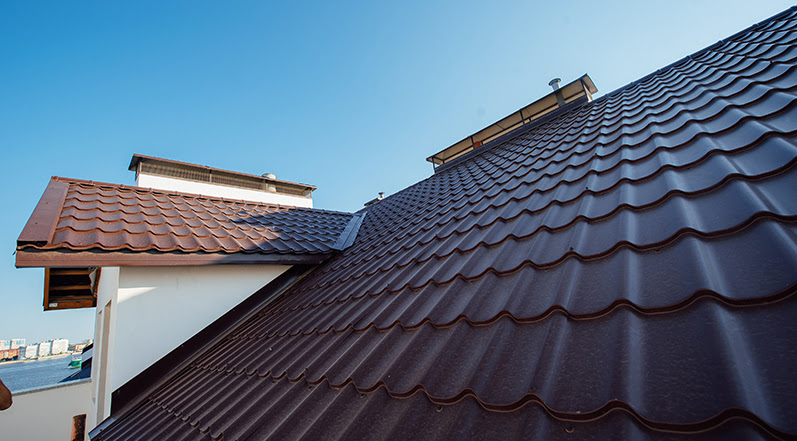
Are you thinking of dismantling the solar system to replace your roof? That could eat up much of your time and cash. Here's a clever alternative - consider switching out the roof prior to installing the solar panels; it might save you some hassle!
But hold on - not every tired, old roof should be ditched in favor of a new one before setting up solar panels. You see, the predicted remaining lifespan of your roof might be a bit exaggerated. Like all of us lead different lives, every roof has its unique story - I'm talking about its present condition.
Let me paint a picture here: understanding what you're sacrificing is pretty important; deciding whether to slap on a new roof before laying down your solar panels is a tricky choice. It's connected with how much life is left on your roof and its current state. It's not always a black-and-white decision – it's solidly in a gray area. After all, it's your roof and your solar setup - and rightly so; the big decision is up to you.
The Solar Payback Period and Energy Savings
Think of your return on solar investment as the length of time it takes to recoup the cost of your solar system from what you save on energy. If your roof lasts as long as, or longer than, this duration, then you've hit the jackpot—it shows your roof is a valuable long-term investment in solar energy. But, - what if your roof only lasts another five years? Putting up solar panels right now might not be the smartest money move. Really, why would you put a ten-year return system on a roof that could need a replacement in half that time?
Now, when we talk about potential energy savings— we mean the bundle of cash you could keep in your wallet by avoiding utility bills and by producing your own solar power–it's like saying goodbye to your expensive power company and getting a sunny hello from your own energy production! The location of where you live can affect how much you save over your solar system's lifetime, but the possible reduction in cost can be huge.
And what if your roof's life expectancy is somewhere between 5 and 20 years? Here's when you need to carefully consider your return on solar investment and your potential energy savings. You'll have to weigh the possible savings on your electricity bills against the cost of possibly needing to replace your roof before predicted.
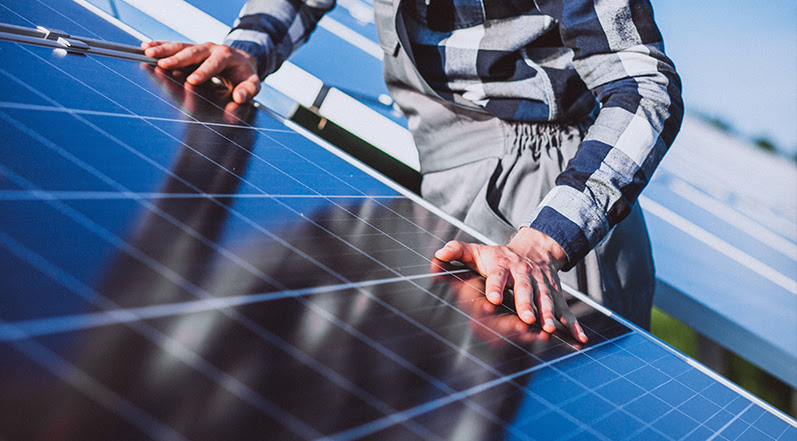
Are the possible savings worth the risk of having to replace your roof sooner than expected? It could be! More so if you weigh in the additional value to your property and the potential tax incentives. But watch out—the right decision will depend on your unique situation and should be an important part of deciding whether solar is worth it for you.
So, what's the best step to take now? Get an inspection on your roof! Employ a trained professional to evaluate your roof condition and tell you how long it could last. Knowing this, you're well-equipped to decide if solar panels are a solid bet for your roof.
At the end of the day, keep in mind that solar energy isn't a quick-fix choice—it's a long-term investment for the future!
How to Pick the Right Roofing Material for Solar
Are you picking the correct rooftop material for your solar setup? It's a decision that can really impact its performance. We're talking about the main support for your solar panels here; it will greatly affect installation simplicity and efficiency. The materials you select can either make installing your solar panels as simple as pie or can be a major challenge. Plus, it determines how well your solar panel works, too. When it comes to functionality and user-friendliness, look no further than the type of roof you've got installed!
Are you thinking about whether your rooftop is solar panel-ready?
Keep in mind about metal rooftops. With a life of 40 to 70 years and a knack for bouncing back sunlight to keep your home cool, they're sturdy and light - a great match for your solar panel team.
Have you considered the popular asphalt shingles? They're light on your wallet and light to handle, too. But are they the best option for solar panels? Well, their flat, even surface actually makes fitting the solar panels a breeze.
Now, what about tile rooftops? Concrete or Spanish tiles can be a bit tough, with them being easy to break and having a unique curve. But don't worry; there are skilled installers out there who are adept at fitting solar panels on tile rooftops.
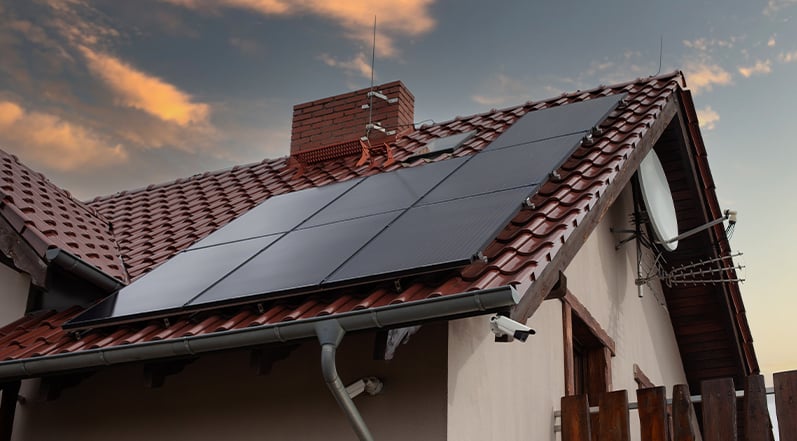
Next on, rubber rooftops. They're known for standing up to bad weather and being easy to install. Solar panels fit in with them just fine.
Okay, let's dig into wooden rooftops. They might make your home look earth-friendly and inviting, but they have a few problems. Their knack for catching fire can make them a risky option for your solar setup.
Slate roofing can't be left out of the discussion. It's fantastic in terms of its long lifespan, but that comes with a weight increase and a chance of becoming brittle, so you need to be careful.
So, choosing the right rooftop material is a bit like choosing the best base for your home. But if you choose wrong, does it mean no solar energy? Nope! It doesn't kick you out of the solar race, but it might limit your choices and raise the costs.
Alright, let's compare flat rooftops with slanted ones. Each has its own story when it comes to solar setups.
Here's the real deal – every rooftop material has good points and bad points, and adding solar panels to the equation can tip the balance. So, if you're planning to install a new rooftop, think carefully about how it will get along with your solar panels. After all, you don't want a rooftop that's left out in the cold, right?
Roof Shape, Size, and Slope
Your roof's shape, size, and slant matter if you are thinking about popping solar panels on top. Why, you ask? Let me explain it in simple terms.
It's all about how your roof is built and how it can affect how well your solar system can do its job. A roof with a weird shape, a steep slope, or a unique bend might throw you some curveballs when installing solar panels. This would not be so great for their performance. Not the best scenario, right?
So, what kind of roof should you have to mount solar panels? Ideally, it should be regular in shape with a big, unbroken area and face south. That's your best bet for soaking up the most sunlight. But don't sweat it if your roof is a bit different. Non-standard roofs can still get in on the solar action; you might just need to get creative with planning and design.
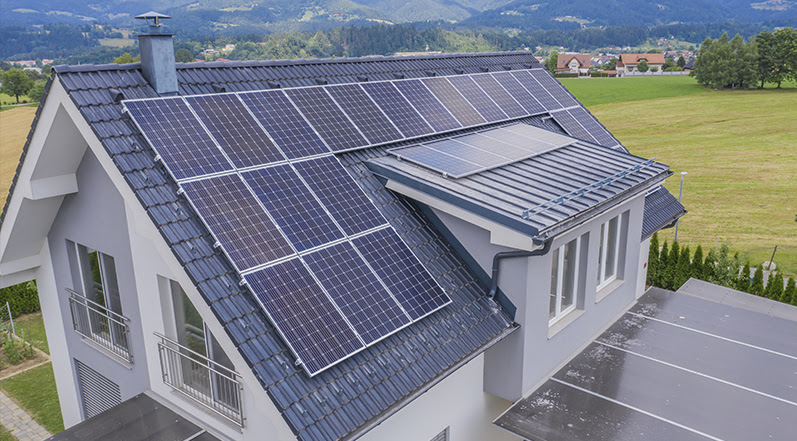
Now, let's dig into roof slopes. Is it a big deal if your roof tips more to the east or west? It really is!
The angle of your roof plays a significant role in determining how much sunlight lands on your solar panels; thus, it's a key player in boosting their energy production. Trying to figure out what the "right amount" of steepness for a roof is can be a head-scratcher. But, many solar energy experts agree that a roof slope from 30 to 45 degrees hits the sweet spot. It snares most of the winter sun when the sun is low, ensuring steady power production year-round.
No need to freak out if your roof doesn't tick all these boxes. Problems like these can be sorted by using flexible installation methods and tweakable mounting systems. Pros in solar installation are pros at picking the best arrangements that use your roof's direction and angle to pump up power production.
Don't get me wrong, this chat isn't implying that only roofs facing south can be home to solar panels. East and west-facing roofs can also rack up a good deal of sunlight for power production. I'm just saying that, on average, south-facing roofs manage to squeeze out the most power yearly.
To wrap up, taking note of your roof's physical features, like its shape, size, and angle, is a good start toward successful solar installation. Why not squeeze every drop out of your potential solar output?
Challenges of Installing Solar on Congested Roofs
Before you jump straight into setting up solar panels, give your roof's layout a solid look-through - it's key. Is a lot of stuff blocking the way up there? It happens a lot - things like chimneys, pipes, and skylights can throw a wrench into placing the panels.
Here's the simple truth: solar panels need room to breathe. These clear spots play two big roles in placement and performance at their best. Have you ever seen a chimney shadow covering a solar panel - what do you think happens? That's right! The shadow blocks the sun, messing with the energy the panel is making. Plus, obstacles like chimneys or pipes could lead to a less-than-ideal placement, which can lower general effectiveness.
Skylights? Sure, they bring the outdoors inside, but they can give solar panels a hard time, too. Where your skylights lay—same as with chimneys and pipes—it's going to shake up your solar setup, no doubt about it.
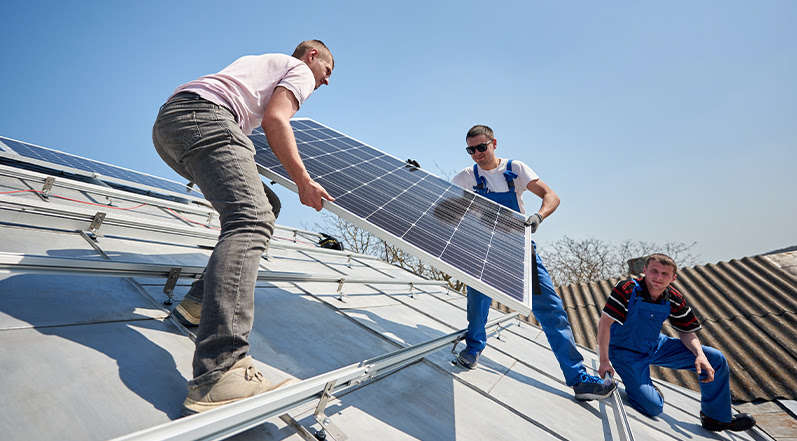
Don't forget to think about safety during the setup process. How is a technician supposed to connect the solar gear on a crowded roof? Too much stuff in the way on the roof can make the setup tough, and that could be a safety risk for the installers.
Now, about routine upkeep. Even though solar panels don't often need maintenance, they still require the occasional cleaning and check-up for top-notch output. But a cluttered roof might make those tasks harder, which could drive up maintenance costs.
And what about repairs or replacements? Does an old pipe need a swap? Or maybe a skylight's leaking? You should be able to get to these potential fixes without the solar panels standing in the way.
Now, the idea of shadows, cluttered layouts, and extra safety risks does sound overwhelming. But hang on, don't let go of your solar panel dream just because your roof's a bit busy.
Comparing Roof and Solar Panel Warranties
Taking the time to learn about the common misunderstandings of your roof and solar panel warranties can bring some light to this subject.
Roof warranties hang around for 20 to 50 years, there to have your back in case of harm or faults caused by shoddy work or manufacturing mishaps. Think about it like a safeguard for your house, ready to take on whatever the weather dishes out. Solar panel warranties? Well, they usually come in a duo – a performance warranty and an equipment warranty.
When we talk about your solar panel's performance warranty, we're talking about a guarantee that the panels will operate at a certain percentage of their initial output for a set time frame. That time frame? Well, it's typically about 25 years, so you're right on target if that was your guess.
There's also an equipment warranty that's in place to handle issues like manufacturing defects, quicker-than-expected wear and tear, or damage from environmental stuff. Is there a downside? It usually gets cut short - often only lasting about 10 to 12 years.

Does it really matter if these warranties aren't in sync? Take a good look at the expected lifetimes of both. You might find discrepancies that could lead to higher bills. Let's say, for instance, your roof warranty ends before your solar panel warranty does; you might find yourself forking out more repair costs for your roof - and these aren't covered by your warranty - just to keep your solar system running smoothly.
Funny how unimportant things, like mismatched warranties, can sneakily increase your maintenance expenses in the long haul. This really shows why, before getting your solar panels installed, it's a smart move to mull over the condition of your roof and its warranty. It's all about being set for possible hitches that might pop up in the future.
The process of contrasting the warranties of your solar panels and roof has many uses beyond a boring chore. It's a strategy for making informed choices today to save you a bundle of unexpected costs tomorrow.
Get a Free Roof Inspection Before Installing Solar
Solar energy is on the rise, leading many homeowners to ask a common question: "Do I need a new roof before installing solar?" It's always smart to get advice from a professional, especially a free initial roof check before you start the solar process.
We at Colony Roofers provide free pre-setup roof inspections! Our team is made up of seasoned professionals who know roofs better than anyone else. Our services span Georgia, Florida, and Texas - honesty and trust are what we're known for, making us your go-to choice for roof advice and solutions.

Why take a chance, especially before an expensive solar installation? Most solar installers are not roofing experts, and you should always have your roof inspected by a trustworthy local roofing company that is comfortable with pre-solar inspections.
Get in touch, schedule your free inspection, and make sure your roof is in top shape!
 Call (678) 365-3138
Call (678) 365-3138



